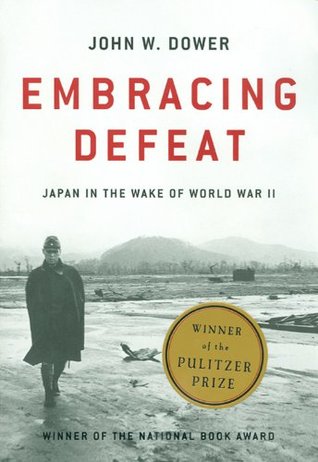More on this book
Community
Kindle Notes & Highlights
Between August 8, when the destruction of Hiroshima by a “new weapon” was first reported, and mid-September, when occupation authorities prohibited almost all mention of nuclear devastation, few days passed when the single-sheet daily newspapers did not include at least passing reference to the mounting horror in both cities.
“This war was begun while we farmers knew nothing about it,” one irate rural man exclaimed, “and ended in defeat while we believed we were winning. There is no need to do repentance for something we weren’t in on.
Tanabe Hajime, one of the country’s most influential philosophers,
Tanabe was regarded by contemporaries to be the most influential Japanese philosopher of the early postwar years,
December 1947 saw the publication of In Distant Mountains and Rivers, the controversial collection of writings by students from Tokyo Imperial University who were killed in the war.
Listen—Voices from the Deep appeared, containing wartime letters, poems, and diary entries from seventy-five student war dead affiliated with Tokyo and other universities.
Professor Watanabe Kazuo of Tokyo University
Norman Mailer’s novel The Naked and the Dead. Generally regarded as the finest American literary portrayal of the Pacific War,
Noma Hiroshi’s Zone of Emptiness (Shinkū Chitai), published in 1952, shocked readers with its portrayal of degradation and brutality
Ōoka Shōhei’s brilliant Fires on the Plain
stupidity, I think, is also a kind of crime.”
While a massive and prolonged act of barbarism such as the Rape of Nanking had been witnessed by the Japanese press corps and publicized internationally, it was not disclosed in Japan.
the Rape of Manila in early 1945,
The first detailed reports of atrocities, which focused on the Philippines and China, shocked the Japanese greatly—so
the general disregard Japanese held toward other people’s children.
Ordinary people unaccustomed to writing for the public, such as housewives and farmers, wrote letters apologizing to the Chinese people and asking how the Japanese could make amends for such terrible behavior.
waka
During the Tokyo trial, GHQ’s censors had suppressed criticism that Tōjō’s role had been overemphasized and that the real heart of “the problem of war responsibility” lay in aggression against China.
The Sugamo playing field was also graced by teams from the “Japan Women’s Baseball League,”
In the summer
apotheosized
zaibatsu
Most big capitalists had come to see the war as a struggle for survival against internal enemies—that is, against militarists and economic bureaucrats of a “national socialist” persuasion intent on imposing virtually total state control over the private sector.
the first head of E.S.S., who ordered their holding company dissolved, turned out to be a former department-store executive who confessed that he could comprehend neither Japanese psychology nor the country’s “structure of business.”14
The key to a prosperous future lay in the promotion of science, the mastery of advanced technology and managerial techniques, and the production of high-value-added manufactures.
It was important, he wrote, to have “a great hundred-year plan” (a hoary phrase from the canon of ancient Chinese writings) and not be overwhelmed by the problems of the moment.
“thoroughness of research, improvement of production techniques, and improvement of managerial efficiency.”
rolling stock,
the Korean War triggered global economic changes that served Japan well.
SCAP naively presided not only over the transfer of its own authority, but also over the institutionalization of the most restrictive foreign trade and foreign exchange control system ever devised by a major free nation.”48
much of what has been characterized as a postwar “Japanese model” proves to be a hybrid Japanese-American model:
the so-called Japanese model could have been more aptly described as a “SCAPanese model.”
mandarinate,


